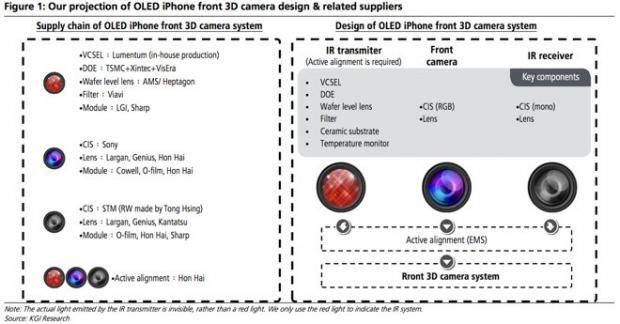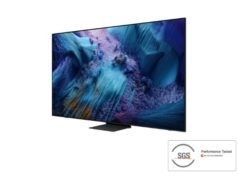Earlier today, we reported that iPhone 8 could come with 3GB of RAM and 64GB or 256GB of internal storage. A new report says that the smartphone could also have a ‘revolutionary’ 3D front camera and wireless charging capabilities, but not from Energous, as it was previously thought.
KGI analyst Ming-Chi Kuo recently revealed that Apple intends to incorporate a ‘revolutionary’ front camera and infrared module on the new iPhone 8, according to 9to5Mac. The module will have the capacity to sense the 3D space in front of it.
The analyst goes on to say that the new components will merge the depth information with 2D images from the front camera and would be used for face and iris recognition, as well as 3D selfies. The 3D system sends invisible IR light signals from the phone and then detects the signals that bounce back off of objects using the 1.4 megapixel IR receiver. The new camera would also allow for facial recognition and fingerprint scanning features.

Apple intends to use algorithms developed by PrimeSense, which the company bought back in 2013. The sensor will have the capacity to detect the location and depth of objects using a dedicated Infrared transmitter and receiver. The front camera will be manufactured by Sony, while the IR receiver will be made by Foxconn/Sharp.
Possibly Qi wireless charging technology on iPhone 8
There have been many reports stating that the upcoming iPhone 8 could have wireless technology and Apple Insider quotes a source saying that the technology won’t be made by Energous, as it was previously thought.
The report says that the US Federal Communications Commission approved only a version of Energous technology which delivers very low power only over a few inches, although the company said that it was working on a system that utilizes 5GHz radio frequency emissions coupled with beam-forming for delivering power at range.
iPhone 8 could actually come with Qi wireless charging technology, which is a standard developed by the Wireless Power Consortium and provides inductive charging over distances of up to 4cm. The technology requires a pad for charging and it’s found on many other smartphones, including the Galaxy S6.



![[MWC 2025] Samsung’s Mobile Technology Leadership Shines](https://loginby.com/itnews/wp-content/uploads/2025/03/1741515476_MWC-2025-Samsung’s-Mobile-Technology-Leadership-Shines-238x178.jpg)



